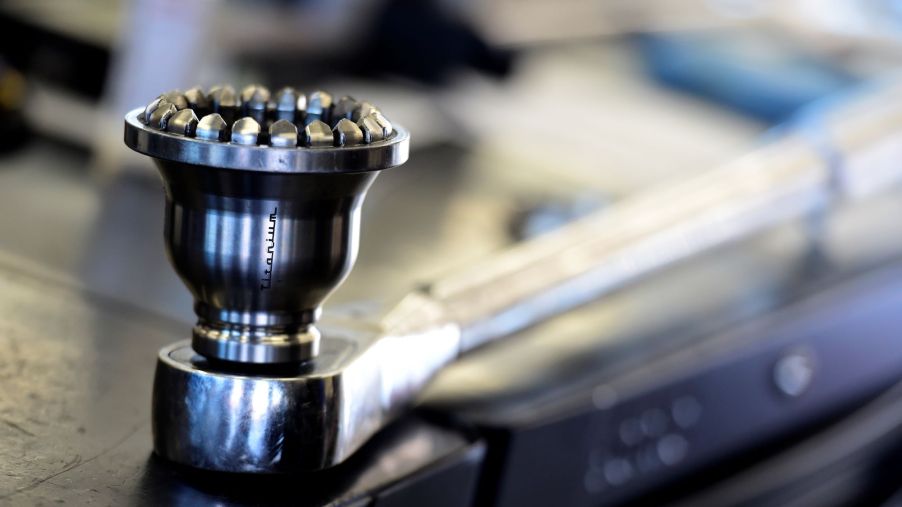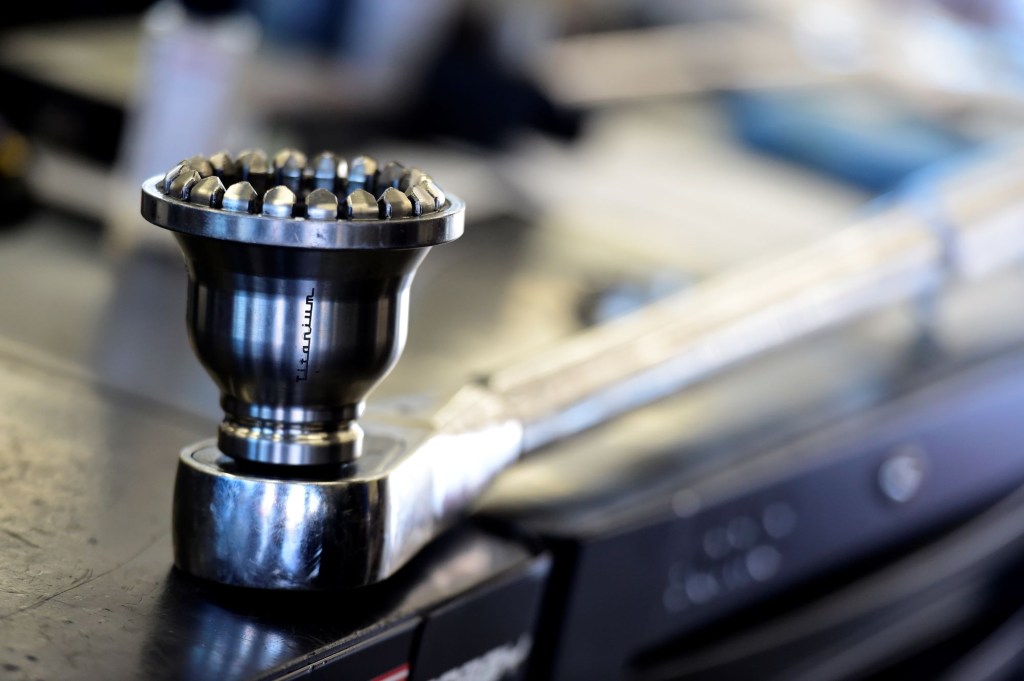
Torque Wrench 101: What It’s Used For and How to Choose the Best Torque Wrench for Your Garage
Have you ever tightened something too much and stripped the threads or broke the bolt when performing vehicle maintenance? Or, you’ve tightened something only to have it come loose soon after? If so, you likely didn’t apply the proper amount of torque. Here’s everything you need to know about torque wrenches and how to use them.
What is a torque wrench, and how does it work?

Car and Driver tell us that “torque is a twisting force.” Foot-pounds (ft-lb or lb-ft) and inch-pounds (in-lb) are the most common units used to measure torque in the United States. It is measured by the force (pounds) applied to a lever (measured in inches or feet) used to turn a fastener. A torque wrench measures torque and relays that information to the user via a needle and scale, an audible or tactile click, or on a digital readout.
What are the most common types?
According to Car and Driver, the most common are “beam or deflection, dial indicator, clicker, and digital” styles. Deflection type torque wrenches are durable and inexpensive but often difficult to read accurately and present the ability to apply too much torque.
Digital styles are easy to use but are more delicate and use replaceable or rechargeable batteries that might be dead when you need them the most. Clicker styles are durable, precise, and offer positive feedback when applying the set torque value even if you cannot see the scale. However, setting the torque value by twisting the handle requires grip strength and good eyesight.
How to use a torque wrench
Home Depot provides detailed instructions for using each type of torque wrench. Generally, the first step involves determining the amount of torque to apply. This information is available from service manuals or online. Next, you’ll need to select a torque wrench that allows the required value to fall between 20 % and 80 % of its range for optimal results. Then, using the proper socket, apply smooth, even pressure on the torque wrench’s handle until achieving the desired torque.
What is the difference between a torque wrench and a ratchet?
The difference between a torque wrench and a ratchet lies in their intended uses. A ratchet can quickly tighten and loosen bolts and nuts during assembly or disassembly of all things bolted together. A ratchet does not measure torque, and its internal components withstand more abuse. On the other hand, torque wrenches accurately apply torque when tightening nuts and bolts and are not intended to loosen bolted connections or quickly tighten fasteners.
How to choose the best option
BobVila.com recommends considering the following factors when choosing the best option:
- Accuracy – Average wrenches have a plus or minus 4% accuracy range. A smaller range indicates a better quality tool but isn’t always necessary.
- Drive size – A torque wrench works with standard sockets with drive sizes such as one-quarter-inch, three-eighths-inch, one-half-inch, three-quarter-inch, or larger. Having a one-quarter-inch drive and a one-half-inch drive in your toolbox will accomplish most DIY mechanic chores.
- Range – Smaller ones have lower torque ranges, often measured in inch-pounds. These are handy for small fasteners in delicate assemblies. A one-half-inch drive should range between 20 ft-lb and 150 ft-lb making them useful for torque up to 120 lb-ft. Higher torque values require larger torque wrenches.
- Scale readability – Different types have different scale styles. Before buying a new one, make sure you can read the scale quickly and easily. Applying the wrong torque value because of a misread scale makes using it pointless.



